The Nissan Prototype MID4, which Ended as Just an Illusion
Three Vintage Japanese Super Cars #03
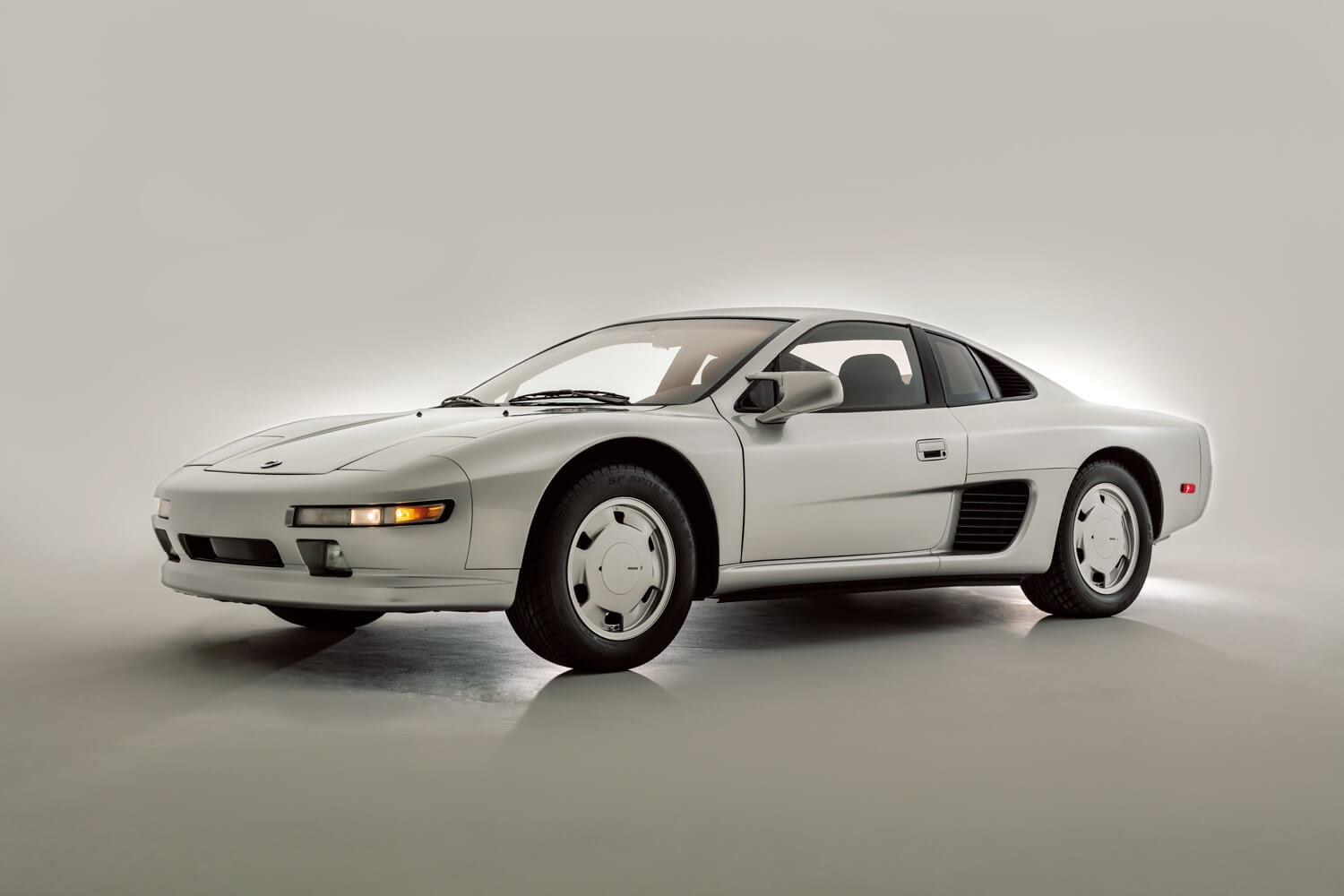
In the 1980’s, the era had ended in which ‘power’ sports cars competed to be the fastest and the quirkiest, instead ushering in an era of technology utilizing electronic control.
The company that got the ball rolling in that respect was Audi of (West) Germany. In 1980, the company released the Audi Quattro, a two-door coupe featuring a full-time four-wheel-drive (4WD) system, the development of which was promoted by Ferdinand Karl Piëch, whom the company had headhunted from Porsche in 1972 as the leader of its technical division. The paradigm shift of using 4WD—originally developed for use in traveling along bad roads—as a tool for fully transmitting the car’s traction to the road surface under any condition was a development that shook up engineers across the world.
Starting in 1982, a new motor sports category was launched known as the Group B set of regulations for rally cars. With the two hundred automobiles produced in the following twelve months being subject to homologation (the granting of approval by an official authority), each manufacturer successively started to put out special limited-production models.
One model that particularly captured people’s attention was Porsche’s Gruppe B, first announced at the Frankfurt Motor Show in 1983. That sports car, which shifted into limited production in 1985 as the Porsche 959, was totally state-of-the-art, having been appropriately described as a ‘department store of the latest technology’, including a composite resin body employing Kevlar, etc., as well as an electronically-controlled full-time 4WD capable of a front/rear torque split, and a twin turbo engine featuring improved turbo lag.
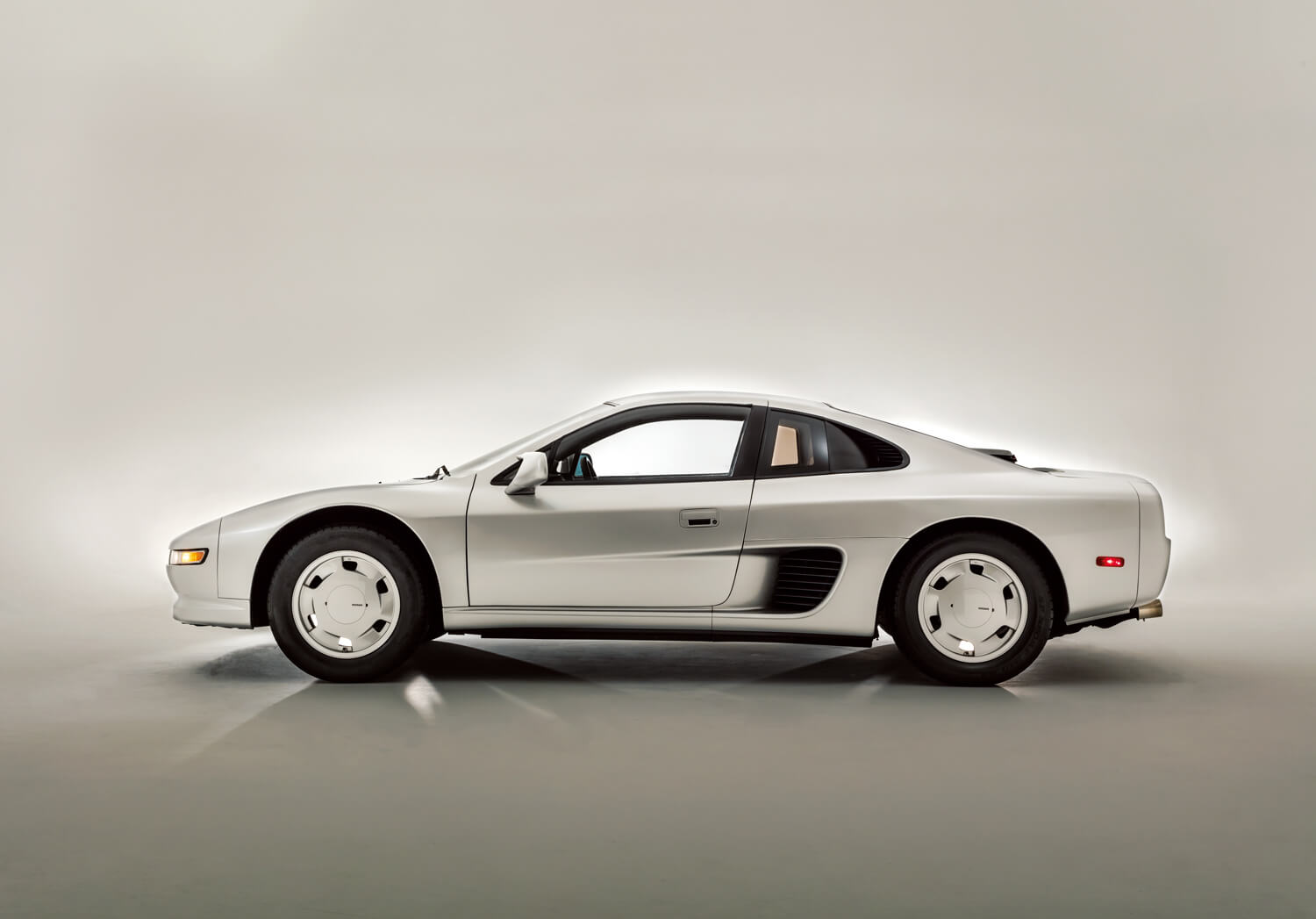
Amidst those trends, Nissan Motor also commenced the development of a sports car, envisioning its eventual commercialization. Namely, the vehicle that resulted was the two-seater MID4 sports car, a midship 4WD automobile that debuted at the 1985 Frankfurt Motor Show.
The men taking the reins of the car’s design development were Shinichiro Sakurai and Masaru Kodaira, among others, all of whom were dyed-in-the-wool graduates of the team that had developed Japan’s first full-fledged midship racing car, the Prince R380, at Prince Motors, which had merged with Nissan in 1966.
The chassis of the car was a steel monocoque (a structural system where loads are supported through an object’s external skin), with a four-wheel MacPherson strut suspension. The engine was a newly-developed VG30DE unit, with a three-liter,V6-cylinder, VG30 unit head converted into a DOHC (double overhead camshaft), that was transversely mounted onto the center of the chassis in a compact fashion, like that of the Ferrari 308 or Fiat X1/9. A 4WD system was also incorporated into the car, controlled by a center differential gear with viscous coupling, the development of which had been commissioned to the Austrian firm, Steyr-Daimler-Puch AG.
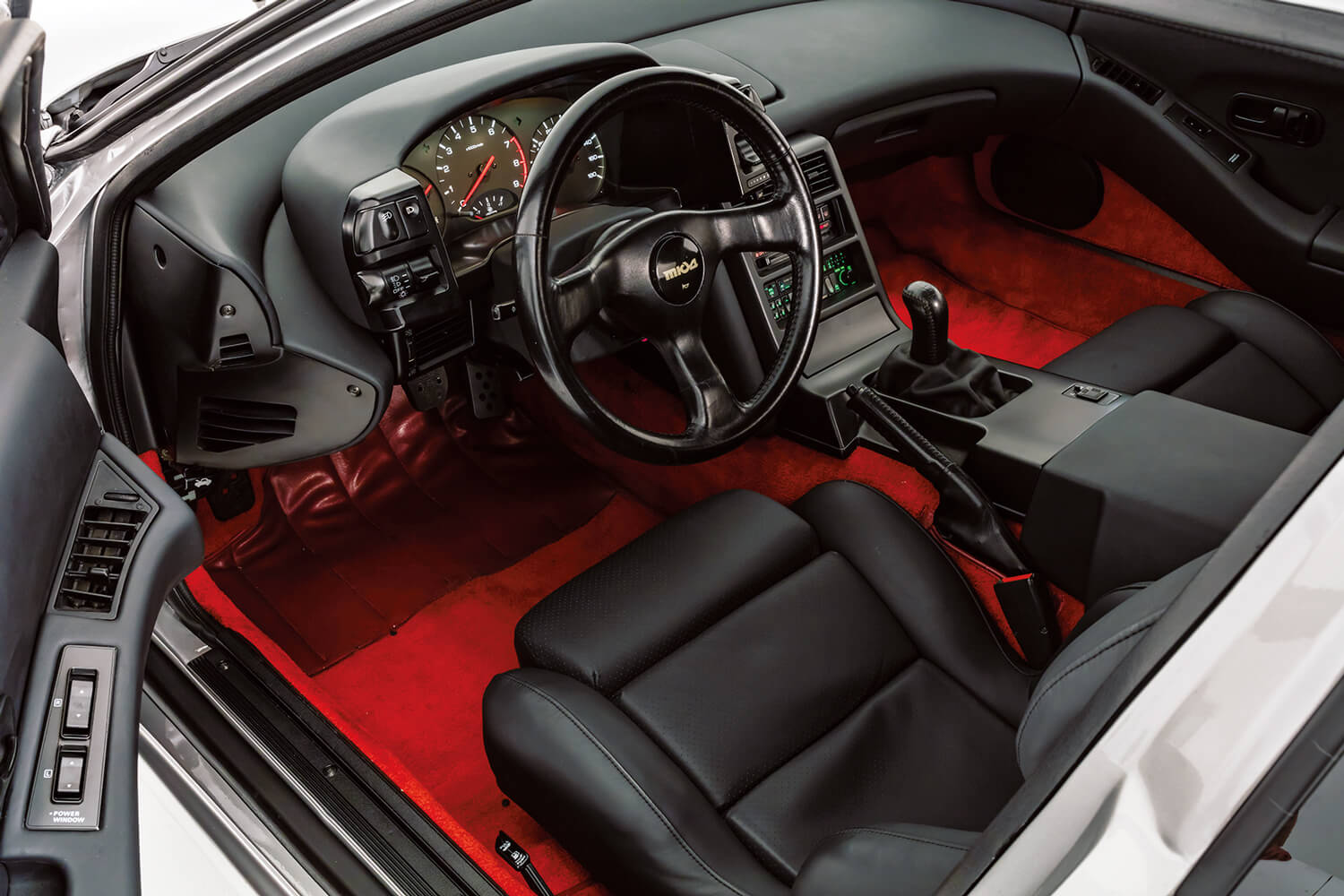

The emergence of the MID4, whose low-riding sport style was unprecedented within a Nissan context, triggered a huge popular response, being featured on various magazine covers and being sold as a minicar.
A more practical version of the car that succeeded the MID4 was the MID4-II (see photo), first appearing at the 1987 Tokyo Motor Show.
Replacing Sakurai, who had succumbed to illness, as the leader of the successor car’s design team was Miki Nakayasu, who had also been involved in the original MID4 development. That change brought about large-scale design modifications to the foundation provided by the predecessor model. Firstly, a new three-liter, VG30 DETT engine unit was developed, powered up by fitting an intercooler and twin turbo, which boosted the maximum output of the engine to 30ps. The engine mounting method for the MID4-II was changed from transverse to longitudinal, with the engine now installed using rigid mounting onto the torque tube linking the front and rear differentials, aiming at heightened stiffness in the drive train as well as improved front/rear weight distribution.
The suspension was changed to a front double-wishbone and rear multi-link, with twin shock absorbers just as with the Porsche 959. In addition to the full-time 4WD system, the car was equipped with a four-wheel steering HICAS with a maximum displacement angle of two degrees.
The car’s body—whose sleek and elegant lines were designed by Fumio Kuwabara and Koji Ito—were characterized by sheet of steel combined with aluminum and such new materials as fiber-reinforced plastic (FRP) and carbon fiber-reinforced plastic (CFRP).

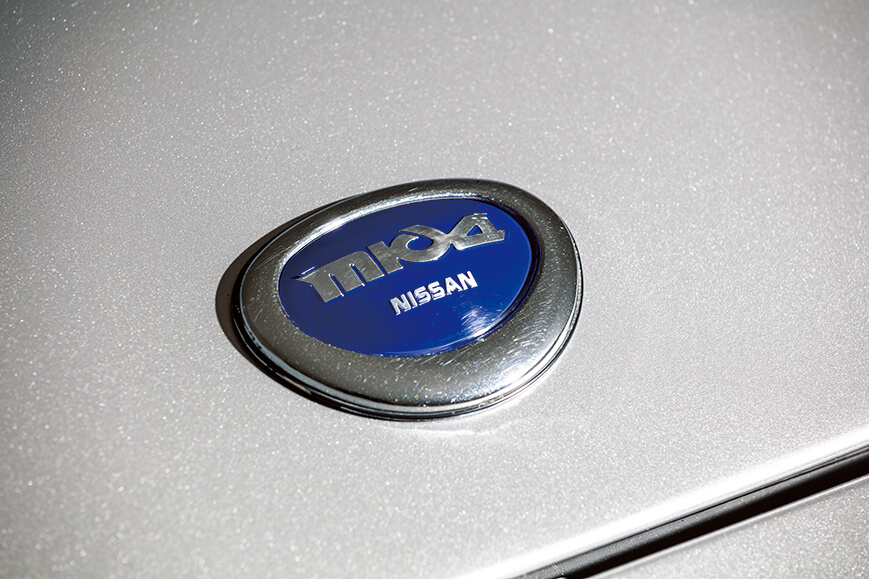
Given the seemingly true rumors being passed around at the time that the car’s market launch was ‘imminent’, its degree of completion as an automobile was quite high, even when judged from today’s perspective. The high standards of its interior appurtenances and styling were no different from those of other contemporary Nissan cars.
However, a closer look at the car ought to raise doubts about whether it would have succeeded had it indeed been sold on the market. The reasons for that include various elements of the design—such as the narrow A pillar and side sill, as well as the large openings in the body—that suggest that the rigidity of the chassis was insufficient for a midship car exceeding 300ps. In addition, there seems to be room for improvement in such areas as the car’s cooling performance and aerodynamics.
Meanwhile, it can definitely be said that the purpose of the MID4 was not simply to win a couple of races in the short term and provide an exciting bit of news that would take people’s breath away. Instead, it was intended to be a serious prototype, created with the same level of toil and passion as an ordinary factory-production car, keeping firmly in mind what a high-performance car of the future should be. As mentioned by Sakurai, who was involved in the development of the original MID4, “We wanted to develop a car that anyone could drive skillfully and fast just like a pro.”
As evidence of that, most of the technology tested in the MID4’s development was fed back into the development of Nissan’s ordinary car models, providing the dynamic force behind Nissan’s 901 Campaign, which aimed at raising the company’s technology level to the top of the world by 1990. It also led straight to the launch of the world’s strongest touring car, the R32 Skyline GT-R, in 1989.
No doubt, the MID4 ended up being illusory. Still, judging how much the super sports cars of the modern era have all, without exception, adopted the approach first taken by the MID4, one can easily realize how important its existence has been.
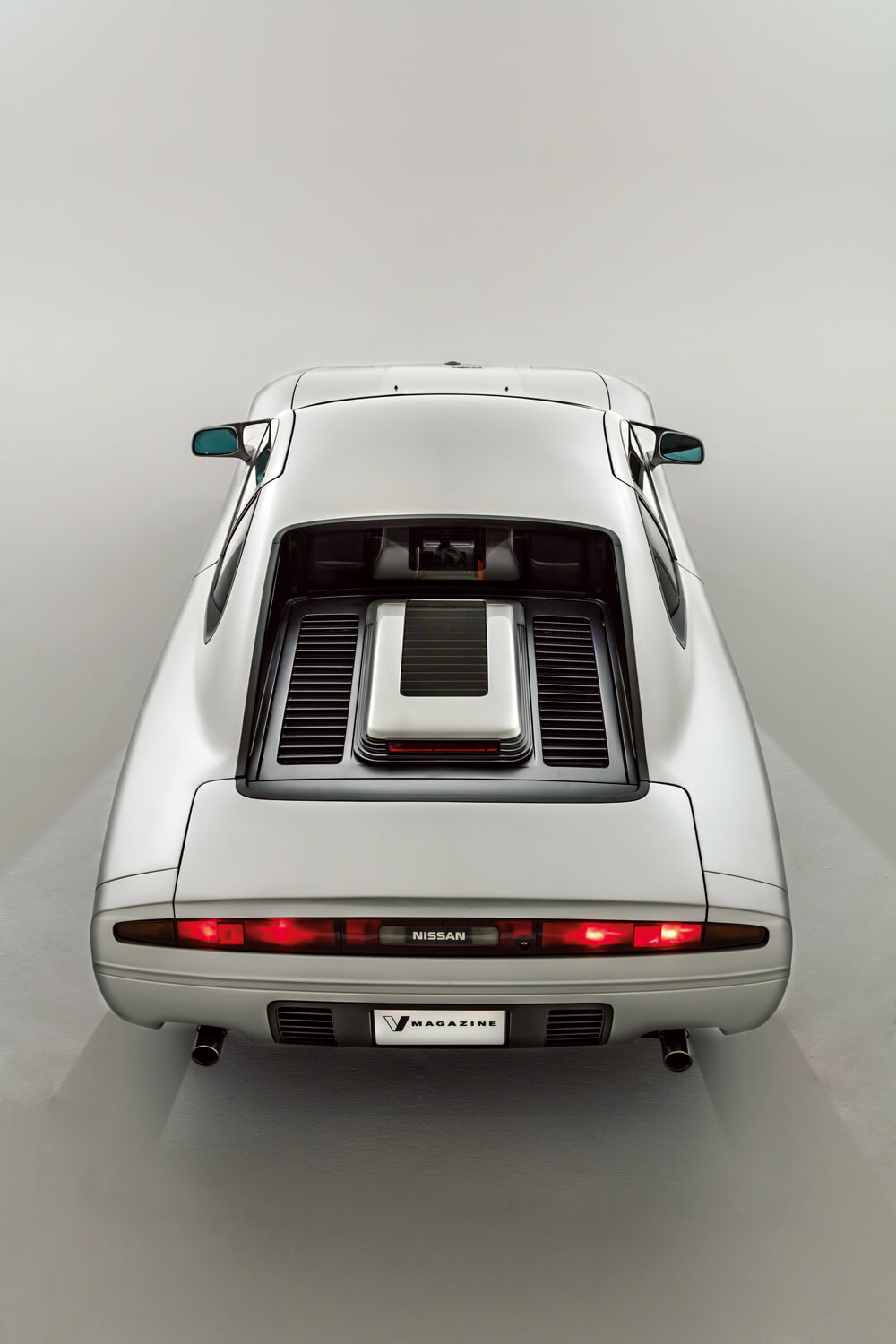
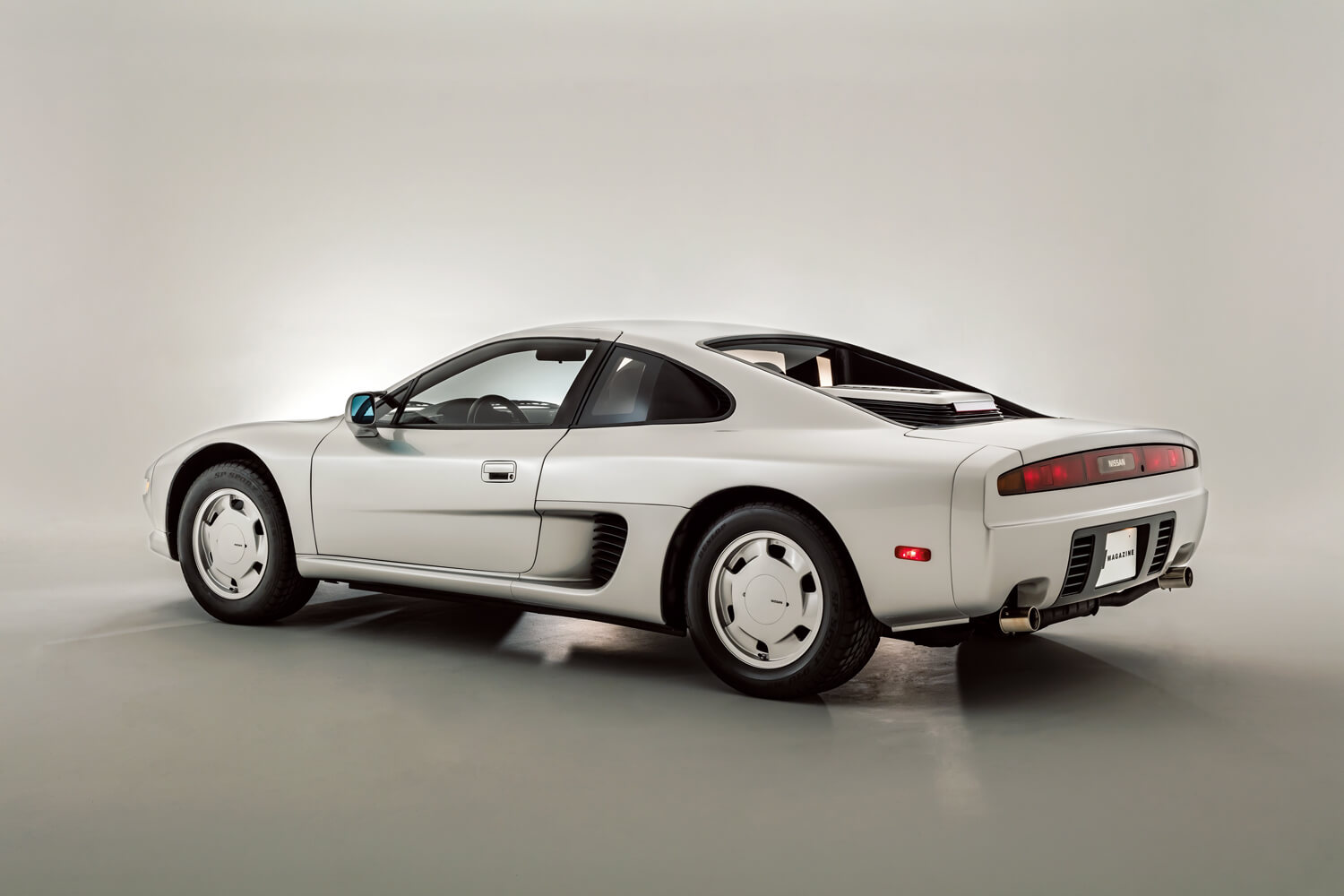
1987 Nissan MID4-Ⅱ
Engine: Water-cooled, V6-cylinder DOHC twin-turbo 2960cc
Maximum output: 330ps/6800rpm
Maximum torque: 39.0kgm/3200rpm
Size: Length 4300mm, width 1860mm, height 1200mm
Three Vintage Japanese Super Cars —
#01: The Fighter Jet-Shaped Mazda RX500 in the Words of its Original Designer >
#02: Have You Ever Heard of the Dome, a Sports Car Born in Kyoto? >
#03: The Nissan Prototype MID4, which Ended as Just an Illusion
TRENDING
-
Hiroshi Nagai's Sun-Drenched Pop Paintings, an Ode to California
Through his colourful pieces, the painter transports viewers to the west coast of America as it was in the 1950s.

-
The Tattoos that Marked the Criminals of the Edo Period
Traditional tattoos were strong signifiers; murderers had head tattoos, while theft might result in an arm tattoo.

-
David Bowie Dressed by Kansai Yamamoto
The English singer was strongly influenced by 'kabuki' theatre and charged the Japanese designer with creating his costumes in the 1970s.

-
A Craft Practice Rooted in Okinawa’s Nature and Everyday Landscapes
Ai and Hiroyuki Tokeshi work with Okinawan wood, an exacting material, drawing on a local tradition of woodworking and lacquerware.

-
‘Seeing People My Age or Younger Succeed Makes Me Uneasy’
In ‘A Non-Conformist’s Guide to Surviving Society’, author Satoshi Ogawa shares his strategies for navigating everyday life.





